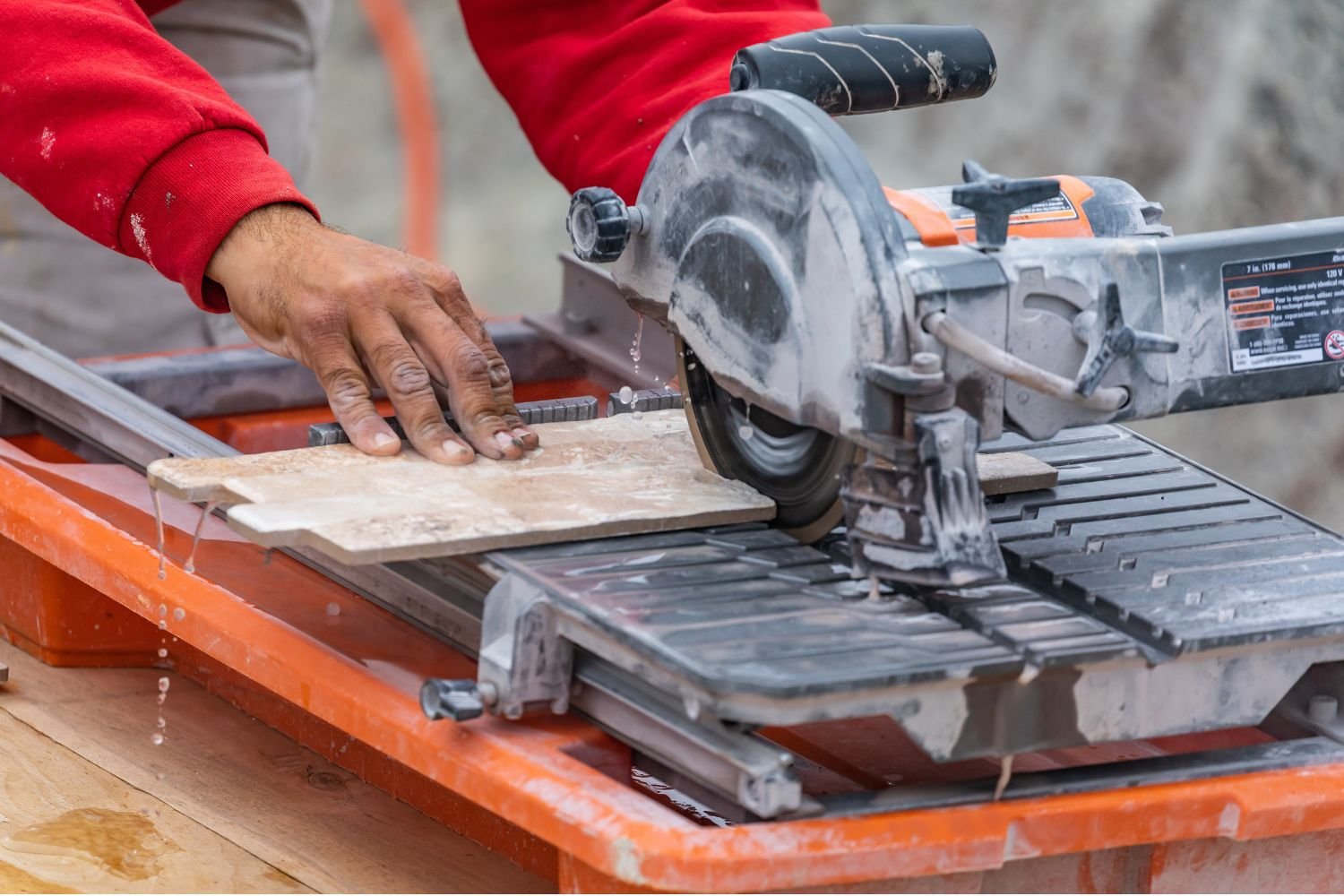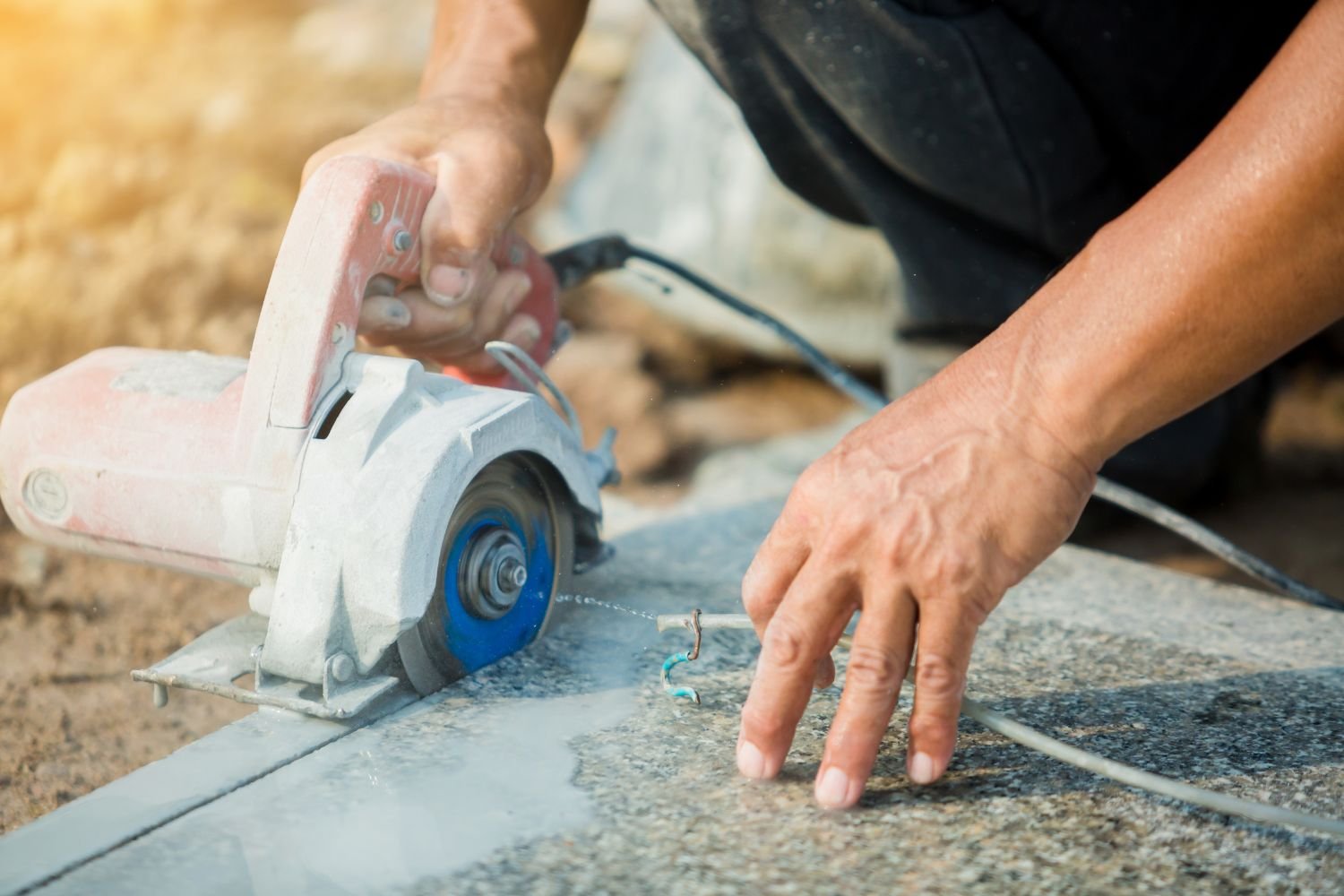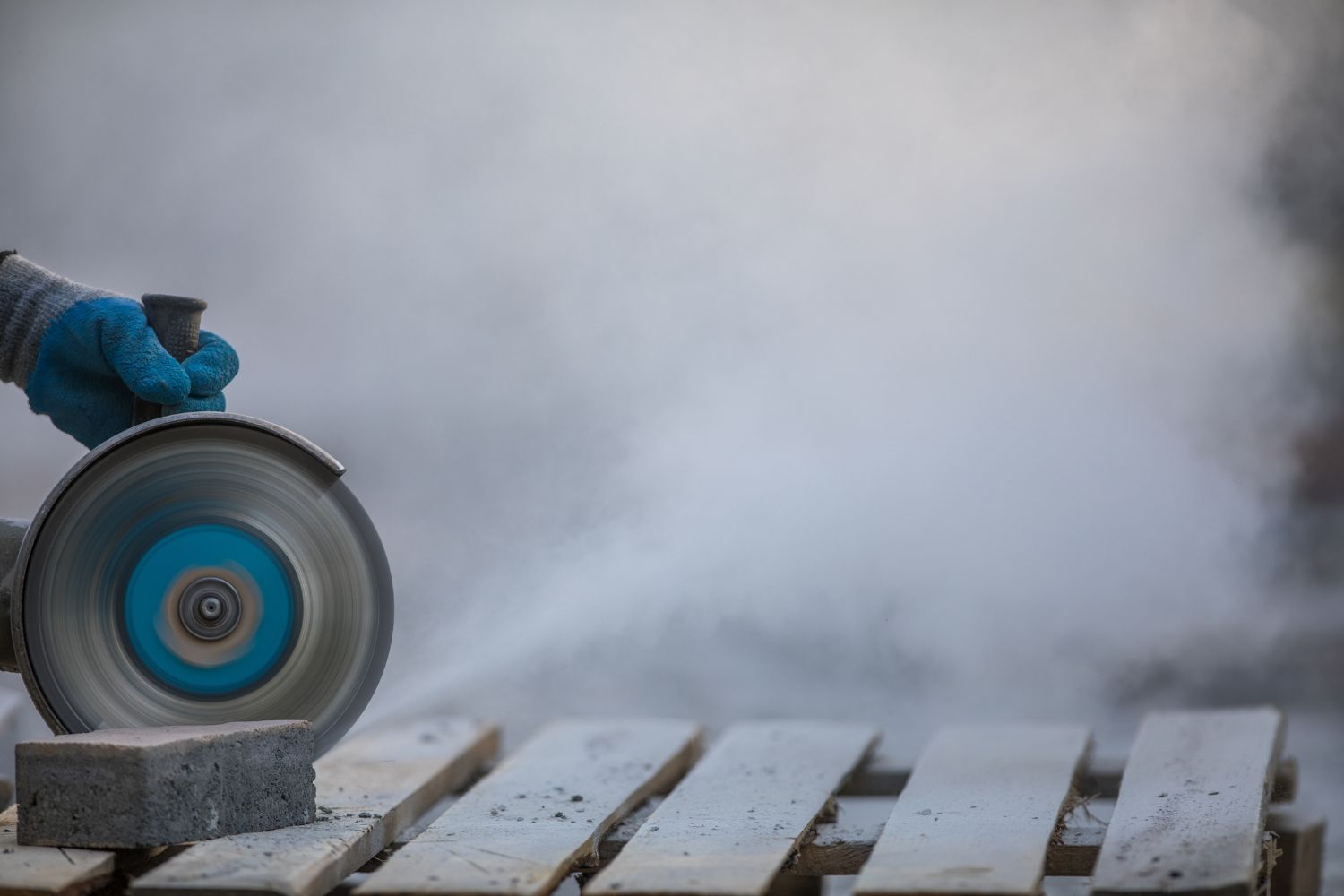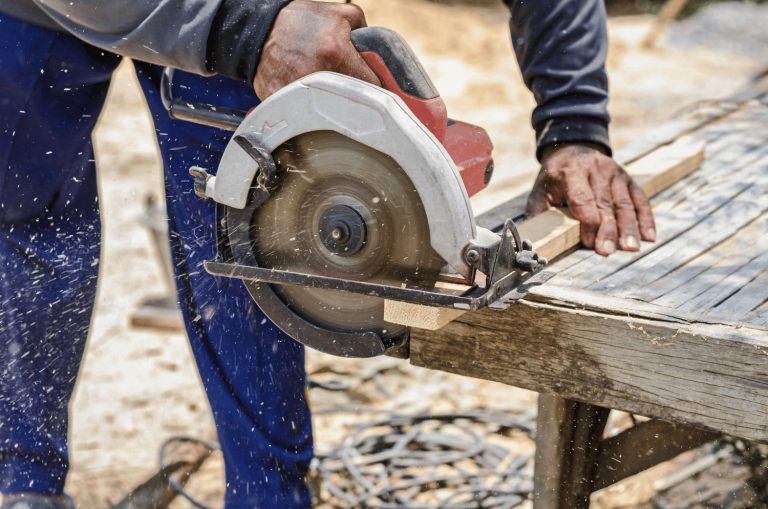What is a Tile Saw: The Ultimate Guide
Welcome to our comprehensive guide on the indispensable tile saw. If you’ve ever wondered about the tool that effortlessly cuts through tiles like a hot knife through butter, you’ve come to the right place. It is a remarkable power tool that plays a crucial role in various construction and DIY projects, allowing you to achieve precise cuts for tiles with ease.
In this article, we will delve into the world of tile saws, exploring their different types, how they work, and the benefits they offer. Whether you’re a seasoned professional or a curious DIY enthusiast, understanding the inner workings of these tools will empower you to tackle tile-related projects with confidence and finesse.
We will walk you through the essential components, explain the different types available in the market, and shed light on the safety measures needed for their efficient operation. Furthermore, we will cover maintenance tips to ensure yours remains in top-notch condition and share valuable insights on selecting the right tool for your specific needs.
Get ready to unlock the secrets of this indispensable power tool and discover the endless possibilities it brings to your tiling projects. Let’s dive in!
What is a Tile Saw? – Understanding the Components and Different Types of Tile Saws
Tile saws are powerful and versatile tools designed specifically for cutting various types of tiles with precision and ease. Whether you are a professional contractor or a DIY enthusiast, understanding the components, types, and benefits of tile saws can significantly enhance your tiling projects.
Explanation of the Components of a Tile Saw
A typical tile saw consists of several essential components that work together to deliver clean and accurate cuts:
- Blade: The blade is the heart of the tile saw. It is a circular, diamond-coated blade specifically designed to cut through hard materials like ceramic, porcelain, and stone tiles. The size and quality of the blade determine the cutting depth and the smoothness of the cuts.
- Motor: Tile saws are equipped with a powerful motor that drives the blade’s rotation. The motor’s strength affects the cutting efficiency and the type of materials the saw can handle.
- Water Reservoir: Most tile saws feature a built-in water reservoir or a water pump system. This water is crucial for cooling the blade during operation, preventing overheating, and reducing dust, resulting in cleaner cuts and prolonged blade life.
Different Types of Tile Saws and Their Applications
Tile saws come in various types, each tailored to specific cutting needs:
- Wet Tile Saws: These are the most common type of tile saws. They use water to cool the blade and lubricate the cutting surface, making them ideal for cutting through dense materials like porcelain and stone. Wet tile saws are commonly used for large and professional projects.
- Dry Tile Saws: Unlike wet tile saws, dry tile saws do not use water during cutting. They are suitable for smaller projects and lighter materials like ceramic tiles. Dry tile saws produce more dust, so proper dust control measures are necessary.
- Handheld Tile Saws: As the name suggests, handheld tile saws are portable and easy to maneuver. They are perfect for small and intricate tile cutting tasks, allowing you to work in tight spaces and make detailed cuts.
Advantages and Limitations of Using Tile Saws Compared to Other Tile-Cutting Methods
Using a tile saw offers several advantages over traditional tile-cutting methods like manual scoring and snapping:
Advantages:
- Precision: Tile saws deliver precise and straight cuts, ensuring a professional finish to your tiling projects.
- Versatility: They can handle various tile materials, including thick and hard tiles that may be challenging to cut manually.
- Efficiency: Tile saws allow you to work quickly and efficiently, saving time and effort.
Limitations:
- Cost: Tile saws can be more expensive than traditional tile-cutting methods.
- Size: Wet tile saws, especially, can be bulky and require ample space for operation and storage.
- Learning Curve: While using a tile saw is not overly complex, it may require a short learning curve for beginners to achieve optimal results.
Understanding these aspects of tile saws will help you make informed decisions when choosing the right tool for your tiling projects and ensure the best possible outcomes.

How Tile Saws Work – Everything You Need to Know to Get the Job Done
Tile saws are ingenious tools that make cutting tiles a breeze. Let’s explore how these remarkable machines work, from the tile cutting process to the crucial safety considerations.
Step-by-Step Breakdown of the Tile Cutting Process
- Preparation: Before you begin, ensure your tile saw is set up on a stable surface. Measure and mark the tile where you want to make the cut. Adjust the tile saw’s cutting guide or fence to align with your marking.
- Safety Gear: Put on safety goggles, hearing protection, and a dust mask to shield yourself from flying debris and dust generated during the cutting process.
- Switch On: Turn on the tile saw, and allow the blade to reach its full speed before starting the cut.
- Cutting: Gently push the tile towards the rotating blade. Let the blade do the cutting work; avoid applying excessive pressure. For straight cuts, follow the cutting guide or fence. For other shapes, move the tile slowly and carefully to achieve the desired cut.
- Cooling and Lubrication: If you’re using a wet tile saw, water from the reservoir or the water pump will continuously flow onto the blade and the cutting surface. This helps to keep the blade cool and lubricate the cut, preventing overheating and producing cleaner cuts.
- Switch Off: Once the cut is complete, switch off the tile saw and wait for the blade to stop spinning before removing the cut tile.
Explanation of the Role of Water Cooling in Preventing Overheating and Dust Control
Water cooling is a fundamental aspect of tile saw operation, particularly in wet tile saws. As the blade rotates at high speeds, friction generates heat, which can lead to overheating and premature blade wear. The continuous flow of water onto the blade keeps it cool, enhancing its cutting efficiency and extending its lifespan.
Additionally, water cooling plays a vital role in dust control. The water helps contain the dust particles produced during cutting, significantly reducing airborne dust. This not only provides a cleaner working environment but also minimizes health risks associated with inhaling tile dust.
Safety Considerations and Best Practices When Operating a Tile Saw
Safety should always be the top priority when using a tile saw. Here are some essential safety considerations and best practices to follow:
- Eye Protection: Wear safety goggles to protect your eyes from tile fragments and water splashes.
- Hearing Protection: Tile saws can be noisy, so wear ear protection to safeguard your hearing.
- Dust Mask: If using a dry tile saw, wear a dust mask to avoid inhaling tile dust.
- Proper Handling: Always handle the tile saw with care and keep your hands away from the blade during operation.
- Maintain Water Levels: For wet tile saws, ensure an adequate water supply to keep the blade cool and minimize dust.
- Read the Manual: Familiarize yourself with the manufacturer’s instructions and recommendations before using the tile saw.
By understanding how tile saws work and following safety best practices, you can make the most of this valuable tool while ensuring a safe and successful tiling experience.

Choosing the Right Saw for your DIY Tile Cutting Needs
Selecting the best tile saw for your specific needs can make a world of difference in the success of your tiling projects. Let’s explore the essential factors to consider, compare different models and brands, and discover valuable tips to ensure you make an informed decision.
Factors to Consider When Selecting a Saw
- Project Size: The scale of your project is a crucial factor in choosing a tile saw. For larger projects or professional use, a high-powered tile saw with a large cutting capacity is recommended. For smaller DIY projects, a more compact and portable tile saw may suffice.
- Material Type: Consider the type of tile material you will be cutting. Dense materials like porcelain and stone require a more powerful tile saw with a diamond-coated blade. For softer materials like ceramic, a less powerful tile saw may be suitable.
- Budget: Tile saws come in various price ranges, so it’s essential to set a budget beforehand. While investing in a quality tile saw is beneficial in the long run, there are budget-friendly options available for occasional use.
- Cutting Precision: If your project demands precise cuts and intricate shapes, a tile saw with adjustable cutting guides and angles will be indispensable.
- Portability: Depending on your workspace and project requirements, you may prefer a portable or stationary tile saw. Handheld tile saws are excellent for mobility and working in tight spaces.
Comparison Between Different Models and Brands Available in the Market
With numerous tile saw models and brands available, conducting thorough research and comparisons is essential. Look for reviews and testimonials from other users to gauge the performance, reliability, and customer satisfaction of different models.
Consider factors like motor power, cutting capacity, water reservoir size, and additional features offered by various brands. Don’t forget to assess the warranty and customer support provided by the manufacturer, as these aspects contribute to the overall value of the tile saw.
Tips for Making an Informed Decision and Avoiding Common Mistakes
- Read Reviews: Take the time to read customer reviews and expert recommendations. Real user experiences can provide valuable insights into the pros and cons of different tile saws.
- Visit Stores: If possible, visit stores that carry tile saws, and ask for demonstrations. Hands-on experience can help you better understand the features and ease of use of each model.
- Consider Long-Term Use: While a budget-friendly tile saw may seem appealing, consider the long-term value and durability of the tool. Investing in a reliable and high-quality tile saw will pay off in the long run.
- Ask for Advice: Seek advice from experienced contractors or DIY enthusiasts who have used tile saws for similar projects. They can offer valuable tips and recommendations based on their firsthand experience.
- Check for Safety Features: Ensure the tile saw you choose has safety features such as blade guards and a shut-off switch for emergencies.
By taking these factors into account and making a well-informed decision, you can find the perfect tile saw that meets your needs, budget, and project requirements. Remember, a quality tile saw is an investment that will make your tiling endeavors smoother, more efficient, and ultimately more rewarding.
Techniques and Tips for Your Wet Tile Saw
To understand how to use a tile saw effectively, understanding various techniques and following essential tips is crucial. In this section, we will explore proper tile preparation, achieving precise cuts for different tile materials, and strategies for cutting various tile shapes.
Proper Tile Preparation Before Cutting with a Tile Saw
- Measurement and Marking: Measure the tile carefully and mark the cutting line using a pencil or tile marker. Double-check your measurements to avoid any costly mistakes.
- Securing the Tile: Use clamps or tile holders to secure the tile firmly in place on the tile saw’s cutting surface. This will prevent the tile from shifting during cutting and ensure accurate results.
- Inspect the Tile Saw: Before cutting, ensure the tile saw is in good working condition. Check the water supply for wet tile saws, ensure the blade is sharp, and the motor is functioning correctly.
- Wearing Safety Gear: Always wear safety goggles, hearing protection, and appropriate clothing when operating a tile saw. Protecting yourself from potential hazards is essential.
Tips for Achieving Precise and Clean Cuts for Different Tile Materials
- Choose the Right Blade: Select a blade specifically designed for the type of tile you are cutting. Diamond-coated blades are ideal for harder materials like porcelain and stone, while general-purpose blades work well with softer tiles.
- Take Your Time: Patience is key to achieving precise cuts. Move the tile slowly and steadily through the blade, allowing it to work through the material without forcing it.
- Support Large Tiles: For larger tiles, use additional support, such as plywood or a tile bridge, to prevent breakage and ensure smooth cutting.
- Avoid Chipping: To minimize chipping on the tile’s surface, cut with the finished side facing down on wet tile saws or up on dry tile saws.
- Practice on Spare Tiles: If you’re new to using a tile saw, practice on spare tiles before working on your actual project. This will help you gain confidence and improve your cutting skills.
Strategies for Cutting Various Tile Shapes
- Straight Cuts: For straight cuts, use the cutting guide or fence to maintain a consistent line. Hold the tile firmly against the guide and slide it smoothly through the blade.
- Diagonal Cuts: To make diagonal cuts, adjust the cutting angle on the tile saw accordingly. Take your time and follow the marked lines carefully.
- Notches and Curves: For notches and curves, make multiple straight cuts close together, and then carefully remove the excess material with a tile nipper or handheld tile cutter.
- Holes and Circles: Use a diamond hole saw attachment or a tile hole cutter to create holes and circles in tiles for fixtures and fittings.
By applying these techniques and tips, you’ll be able to handle a wide range of tiling projects confidently, achieving precise and clean cuts in various tile materials and shapes. Remember, practice makes perfect, so don’t hesitate to experiment and improve your skills with the tile saw.

Maintenance and Care
Proper maintenance and care are essential to ensure that your tile saw continues to perform at its best and lasts for many years to come. In this section, we will cover regular maintenance routines, cleaning and storage tips, as well as troubleshooting common issues that may arise with your tile saw.
Regular Maintenance Routines to Ensure Optimal Performance and Longevity of the Tile Saw
- Blade Maintenance: Regularly inspect the blade for signs of wear, such as dullness or chipping. Clean the blade after each use and replace it if it becomes excessively worn to maintain efficient cutting performance.
- Water Reservoir Maintenance: For wet tile saws, check and refill the water reservoir regularly to ensure a continuous and steady flow of water to the blade. Clean the water pump and hoses to prevent clogs and ensure proper cooling.
- Motor and Power Cord: Inspect the motor for any debris buildup and clean it to prevent overheating. Check the power cord for any fraying or damage, and replace it if necessary to avoid electrical hazards.
- Alignment and Calibration: Periodically check the alignment of the cutting guide or fence to ensure precise cuts. Recalibrate the tile saw if needed to maintain accuracy.
How to Clean and Store the Tile Saw After Use
- Cleaning the Tile Saw: After each use, clean the tile saw thoroughly to remove any debris, water, and tile residue. Use a brush and a damp cloth to wipe down the surface, blade, and water reservoir.
- Dust Control: If using a dry tile saw, take extra care to clean up the dust generated during cutting. Consider using a shop vacuum with a dust collection attachment for effective dust control.
- Drying the Tile Saw: For wet tile saws, allow the water reservoir and blade to dry completely before storing the tool. This helps prevent corrosion and keeps the tile saw in good condition.
- Proper Storage: Store the tile saw in a dry and dust-free area. Cover it with a protective cloth or tarp to prevent dust buildup and potential damage.
Troubleshooting Common Issues and When to Seek Professional Repairs
- Blade Issues: If the blade is not cutting smoothly or producing rough edges, it may need sharpening or replacement. Consult the manufacturer’s guidelines or seek professional assistance.
- Motor Problems: If the motor is making unusual noises or overheating frequently, stop using the tile saw immediately and seek professional repairs.
- Water Flow Issues: If the water flow to the blade is insufficient, check for clogs or pump malfunctions. Clean or repair the water pump as needed.
- Electrical Problems: If you experience any electrical issues, such as power interruptions or sparking, unplug the tile saw and have it inspected by a qualified technician.
By following these maintenance and care practices, your tile saw will remain in optimal condition, ensuring consistent performance and extending its overall lifespan. Proper care not only safeguards your investment but also enhances your safety while using the tile saw.
Tile Saw Accessories
Tile saws can be made even more versatile and efficient with the help of various accessories. In this section, we will provide an overview of useful tile saw accessories, explain how they enhance the cutting process, and recommend accessories based on specific project requirements.
Overview of Useful Accessories for Tile Saws
- Tile Saw Stand: A sturdy tile saw stand provides a stable and elevated platform for the tile saw, allowing for comfortable and precise cutting. It also reduces strain on the operator’s back and improves overall safety.
- Cutting Guides and Fences: Cutting guides and fences help maintain straight and accurate cuts. They are especially useful for long, straight cuts and repetitive tile cutting tasks.
- Miter Guides: Miter guides enable angled cuts, making them essential for projects that require beveled or diagonal tile cuts.
- Tile Saw Blades: Having a selection of different tile saw blades allows you to cut various tile materials with precision. Diamond-coated blades are suitable for harder tiles, while general-purpose blades work well with softer tiles.
- Water Trays and Pans: Additional water trays and pans can be useful for wet tile saws, providing a continuous water supply and reducing refill frequency during extended cutting sessions.
How These Accessories Enhance the Efficiency and Accuracy of Tile Cutting
- Improved Stability: Tile saw stands and additional support accessories provide stability to the tile saw, reducing vibrations and ensuring smooth and precise cuts.
- Consistency and Precision: Cutting guides, fences, and miter guides offer consistent alignment, allowing for accurate cuts without the need for continuous measurement.
- Versatility: Different tile saw blades expand the versatility of the tool, enabling you to cut through various tile materials effortlessly.
- Reduced Cleanup: Water trays and pans for wet tile saws help contain water and minimize the mess during cutting, making cleanup more manageable.
Recommended Accessories Based on Specific Project Requirements
- Large Projects: For large tiling projects, a sturdy tile saw stand is highly recommended. It ensures stability and ease of use, particularly when working with heavy or oversized tiles.
- Precision Cuts: If your project demands precise cuts and intricate designs, consider investing in high-quality cutting guides and miter guides. These accessories will elevate your cutting accuracy significantly.
- Different Tile Materials: If you frequently work with various tile materials, having a selection of tile saw blades is essential. Invest in blades specifically designed for the materials you commonly use.
- Mobility and Portability: If you need to move the tile saw frequently or work in different locations, opt for a lightweight and portable tile saw stand. This will allow for easy transportation and setup.
By investing in the right tile saw accessories based on your project requirements, you can optimize the performance of your tile saw and achieve professional results in your tiling endeavors. Remember to select high-quality accessories that are compatible with your tile saw model for the best outcomes.

Projects and Applications of Tile Installation
A tile saw opens up a world of creative possibilities in various home improvement and professional settings. Let’s explore some inspirational project ideas that you can accomplish with a tile saw, along with real-life examples of its applications.
Inspirational Project Ideas That Can Be Accomplished with a Tile Saw
- Stunning Backsplashes: Create eye-catching and customized backsplashes for your kitchen or bathroom using an array of tile shapes and colors. With a tile saw, you can achieve precise cuts for intricate mosaic patterns, adding a touch of elegance to any space.
- Elegant Flooring: Design unique and stylish tile flooring by combining different tile sizes and materials. A tile saw allows you to create seamless transitions between tiles and cut shapes to fit around obstacles seamlessly.
- Artistic Murals: Unleash your creativity and craft intricate tile murals for accent walls or outdoor spaces. With a tile saw, you can cut tiles into beautiful shapes and designs, transforming any plain surface into a work of art.
- Customized Tabletops: Personalize tabletops for dining or coffee tables by cutting tiles into specific shapes and patterns. They make it easy to achieve a professional finish, turning a simple table into a stunning centerpiece.
Examples of Real-Life Applications in Home Improvement and Professional Settings
- Bathroom Renovations: Tile saws are essential in bathroom renovations, enabling precise cuts for shower tiles, bathtub surrounds, and vanity backsplashes. The ability to create custom designs and patterns allows for a truly unique and luxurious bathroom.
- Swimming Pool Designs: In professional settings, these saws are extensively used in swimming pool designs. They allow for precise cutting of pool tiles to achieve stunning waterline patterns and intricate pool mosaics.
- Outdoor Patios and Walkways: These saws are instrumental in crafting durable and visually appealing outdoor patios and walkways. They can cut pavers, stone tiles, and other materials, making them suitable for both residential and commercial landscapes.
- Tiling in Commercial Spaces: From restaurants and hotels to shopping centers and offices, they play a vital role in tiling commercial spaces. They enable professional tile installation that can withstand high foot traffic and frequent use.
With a tile saw at your disposal, the possibilities are limitless. Whether you’re a DIY enthusiast or a professional contractor, this versatile tool empowers you to take on a wide range of projects, transforming spaces into beautiful and functional masterpieces. From intricate designs to large-scale installations, a tile saw is a must-have tool for anyone seeking to add style and elegance to their surroundings.
So, if you have yet to experience the magic of a tile saw, we encourage you to dive in and explore the world of tiling possibilities it brings. With the knowledge and tips gained from this guide, you’re well-equipped to embark on your tiling journey with confidence.







